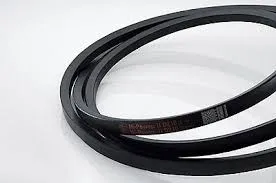- Arabic
- French
- Russian
- Spanish
- Portuguese
- Turkish
- Armenian
- English
- Albanian
- Amharic
- Azerbaijani
- Basque
- Belarusian
- Bengali
- Bosnian
- Bulgarian
- Catalan
- Cebuano
- Corsican
- Croatian
- Czech
- Danish
- Dutch
- Afrikaans
- Esperanto
- Estonian
- Finnish
- Frisian
- Galician
- Georgian
- German
- Greek
- Gujarati
- Haitian Creole
- hausa
- hawaiian
- Hebrew
- Hindi
- Miao
- Hungarian
- Icelandic
- igbo
- Indonesian
- irish
- Italian
- Japanese
- Javanese
- Kannada
- kazakh
- Khmer
- Rwandese
- Korean
- Kurdish
- Kyrgyz
- Lao
- Latin
- Latvian
- Lithuanian
- Luxembourgish
- Macedonian
- Malgashi
- Malay
- Malayalam
- Maltese
- Maori
- Marathi
- Mongolian
- Myanmar
- Nepali
- Norwegian
- Norwegian
- Occitan
- Pashto
- Persian
- Polish
- Punjabi
- Romanian
- Samoan
- Scottish Gaelic
- Serbian
- Sesotho
- Shona
- Sindhi
- Sinhala
- Slovak
- Slovenian
- Somali
- Sundanese
- Swahili
- Swedish
- Tagalog
- Tajik
- Tamil
- Tatar
- Telugu
- Thai
- Turkmen
- Ukrainian
- Urdu
- Uighur
- Uzbek
- Vietnamese
- Welsh
- Bantu
- Yiddish
- Yoruba
- Zulu
Aug . 30, 2024 09:25 Back to list
Timing Belt Operation Guide - Understanding Maintenance and Functionality
Understanding Timing Belt Operation
The timing belt is a crucial component found in internal combustion engines, playing a key role in synchronizing the rotation of the crankshaft and camshaft. This synchronization is essential for ensuring that the engine's valves open and close at the right times during each cylinder's intake and exhaust cycles. A well-functioning timing belt is vital for the engine's overall performance, efficiency, and longevity.
Understanding Timing Belt Operation
One of the primary functions of the timing belt is to eliminate the risk of the engine's piston colliding with the open valves. If the timing belt were to fail, it could lead to catastrophic engine damage, often referred to as engine interference. In non-interference engines, the pistons and valves have enough clearance to avoid contact even if the timing belt breaks. However, in most high-performance engines, failure to maintain the timing belt can result in severe damage requiring extensive repairs.
timing belt operation

The timing belt operates under the principle of tension and alignment. Proper tension is essential; if a timing belt is too loose, it can skip teeth, leading to inaccurate timing and potential engine misfires. Conversely, if it is too tight, it can cause excessive wear on the bearings and other components, leading to premature failure. Regular inspections and adjustments are necessary to ensure optimal performance.
Another critical aspect of timing belt operation is its service life. Manufacturers typically recommend replacing the timing belt every 60,000 to 100,000 miles, depending on the engine design and usage. Factors such as driving conditions, engine load, and maintenance habits can affect this lifespan. Drivers should be vigilant about any warning signs, such as unusual noises from the engine or performance issues, which may indicate that the timing belt needs attention.
Furthermore, the timing belt is often part of a larger system that includes idler pulleys, tensioners, and sometimes the water pump. The condition of these components is equally important, as they work in conjunction with the timing belt. Failure in any part of the system can lead to a domino effect, compromising the entire engine's operation.
In conclusion, the timing belt is a small yet vital component of your vehicle’s engine. Understanding its operation, maintenance requirements, and the consequences of failure is crucial for every car owner. Regular maintenance and timely replacements can help ensure that the timing belt operates efficiently, contributing to the health and longevity of the engine. Ignoring this integral part of the engine can lead to costly repairs and potential breakdowns, making it essential for drivers to prioritize the upkeep of their timing belts.
-
Korean Auto Parts Timing Belt 24312-37500 For Hyundai/Kia
NewsMar.07,2025
-
7PK2300 90916-T2024 RIBBED BELT POLY V BELT PK BELT
NewsMar.07,2025
-
Chinese Auto Belt Factory 310-2M-22 For BMW/Mercedes-Benz
NewsMar.07,2025
-
Chinese Auto Belt Factory 310-2M-22 For BMW/Mercedes-Benz
NewsMar.07,2025
-
90916-02660 PK Belt 6PK1680 For Toyota
NewsMar.07,2025
-
drive belt serpentine belt
NewsMar.07,2025

